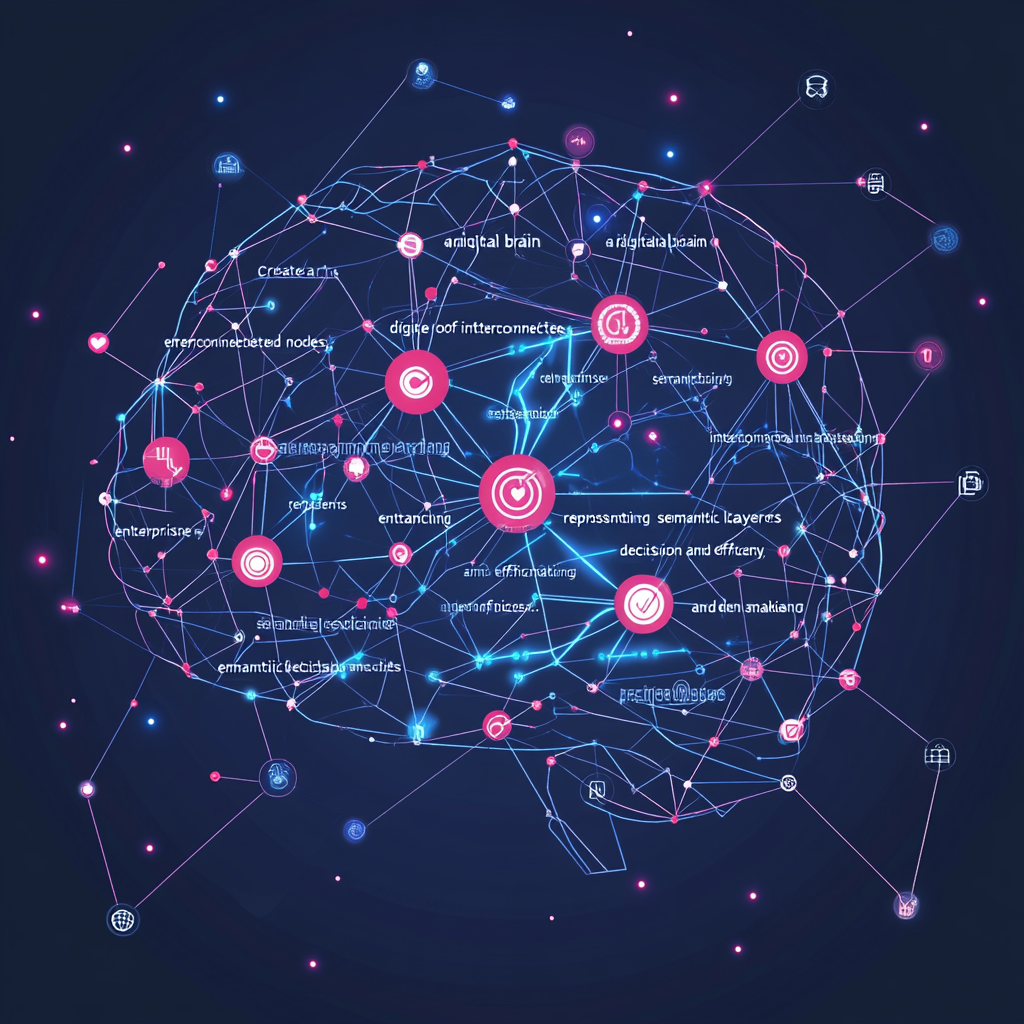
Enhancing Enterprise Intelligence with Semantic Layers for AI Agents | TechRadar
Imagine a bustling enterprise where intelligent systems do more than just shuffle around heaps of data. Picture a vibrant ecosystem where AI understands not only the numbers but the stories behind them, like a trusty bard recounting tales from the annals of history. Welcome to the realm of the semantic layer, your secret weapon for achieving true AI intelligence. It’s not just some convoluted tech concept; think of it as the Rosetta Stone for your organization, translating raw data into meaningful insights, bridging the gap between chaotic information and actionable intelligence. Without this magical layer, AI is like a ship lost at sea, unable to navigate through the fog of data.
Back in the early days, AI agents were more like clumsy ants on a computer's keyboard, mindlessly performing repetitive tasks. But hold onto your hats, because those days are over! Today's AI is evolving into a brainy powerhouse, making complex decisions that require a robust understanding of the vast data landscape of any organization. Gathered from multiple channels and analyzed with cutting-edge deep learning models, these agents must stop thinking of the data as mere doodles and start comprehending the "why" and "how." Without a semantic layer, these agents are susceptible to blunders akin to assembling a jigsaw puzzle without knowing what the picture looks like.
Let’s break down the role of the semantic layer. It’s not just a fancy term thrown around in board meetings; it’s a structured framework aiming to mold data into meaningful business definitions. Think of it as the ultimate organization tool for your enterprise, encompassing everything from metadata and business glossaries to ontologies and knowledge graphs. Together, these components create a fantastic ensemble that performs a range of critical tasks, including:
-
Providing Metadata: It’s like giving your data a shiny name tag and a brief biography, offering much-needed context for those navigating the data seas.
-
Standardizing Business Glossaries: This is about ensuring everyone speaks the same language. Miscommunication can lead to blunders—nobody wants their “customers” misidentified as “clients” in a boardroom discussion.
-
Applying Taxonomies and Controlled Vocabularies: It’s as if someone decided to file every document in a library according to a clear system. The result? All the data is consistently categorized, making retrieval a walk in the park.
-
Encoding Domain Logic via Ontologies: This adds a touch of smartness to your data framework, allowing specific business rules and logic to play nice together, resulting in more coherent insights.
-
Integrating Knowledge Graphs: Ah, the pièce de résistance! These graphs connect the dots between siloed data sets, painting a unified picture of your enterprise data landscape.
Now, let’s talk about how this delightful semantic layer supercharges your AI agents into intelligent beings rather than languorous algorithms. Here are a few dazzling benefits:
-
Contextual Understanding: Thanks to the unified data model, AI agents can navigate through multiple domains, tackling complex tasks with ease. That means they dodge misunderstandings (the bane of any relationship) and can recognize different interpretations of the same data point—like knowing that "customer" and "client" can be two sides of the same coin depending on the context.
-
Accuracy and Consistency: Thanks to a semantic layer, AI agents can avoid the muck of misinterpretation. Definitions are standardized, relationships clear, leading to crisp and clean decision-making.
-
Explainability and Governance: In the world of business, being able to explain why a decision was made is akin to holding the keys to a kingdom. A semantic layer opens doors to traceability, reinforcing trust and compliance with regulatory standards, which is crucial in today’s landscape.
-
Scalability and Adaptability: This structured framework lays down a solid foundation, securing the integration of AI agents into existing systems. It makes scaling solutions a breeze, inviting AI to flourish across the organization.
However, let’s not sugarcoat the journey to implementing semantic layers; it’s not all daisies and sunshine:
-
Data Integration Complexity: Merging data from a medley of sources into a cohesive semantic framework can feel like herding cats. The challenge intensifies with legacy systems that cling to their outdated ways.
-
Ontology and Knowledge Graph Management: Keeping these complex entities healthy and updated is a monumental task. It demands not only substantial resources but also meticulous attention to detail.
The future beckons, and as AI agents continue their rise, expect semantic layers to evolve and adapt to the growing need for intelligent, context-aware applications. Picture a world where the integration of AI into the semantic layer is no longer a novel concept but a standard operational procedure that helps manage and interpret data with impeccable accuracy, ensuring that future AI solutions are smart, trustworthy, and—most importantly—explainable.
In closing, consider the semantic layer to be the backbone of your enterprise AI network, granting cognitive clarity to your AI agents. Picture them as sharp-eyed detectives with all the necessary context for solving complex cases. Without it, AI is merely a wing and a prayer! As organizations gear up to unleash the potential of AI across their operations, the significance of the semantic layer cannot be overstated. Ready to amp up your AI game and integrate a semantic layer?
Want to stay up to date with the latest news on neural networks and automation? Subscribe to our Telegram channel: @ethicadvizor

